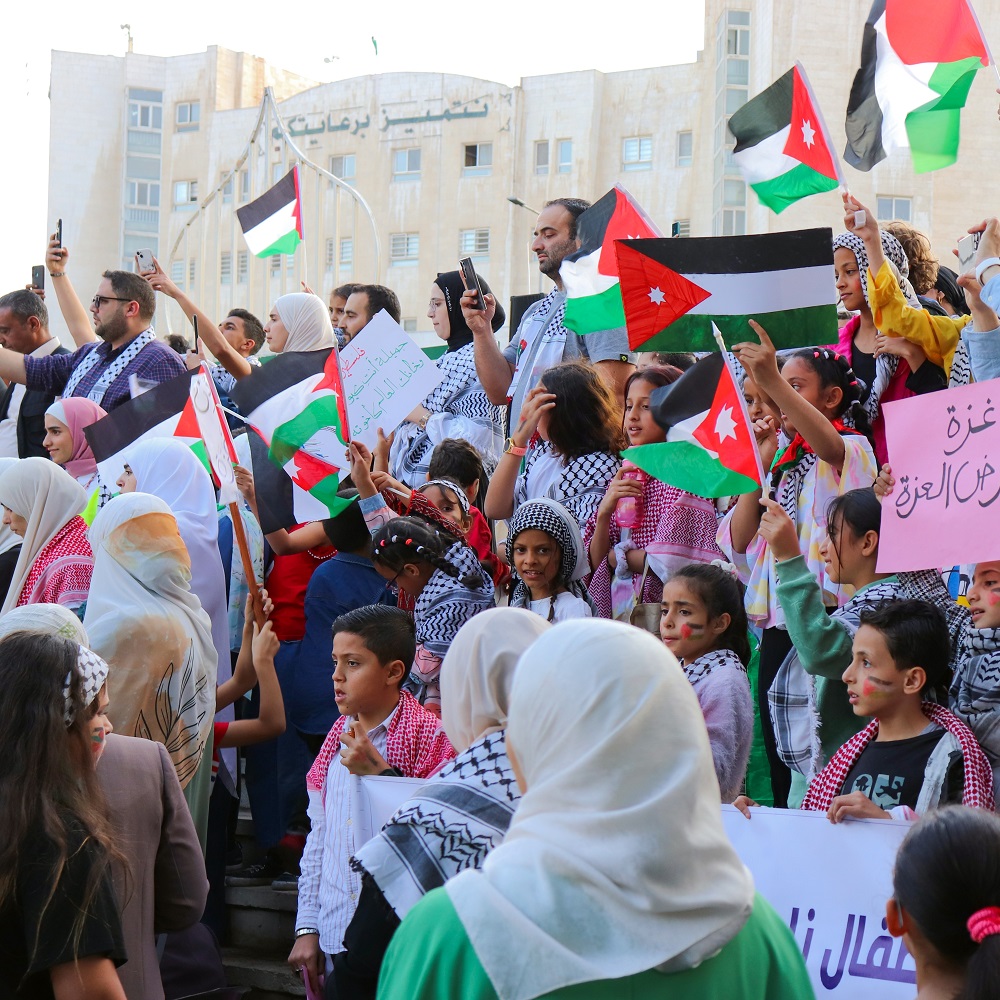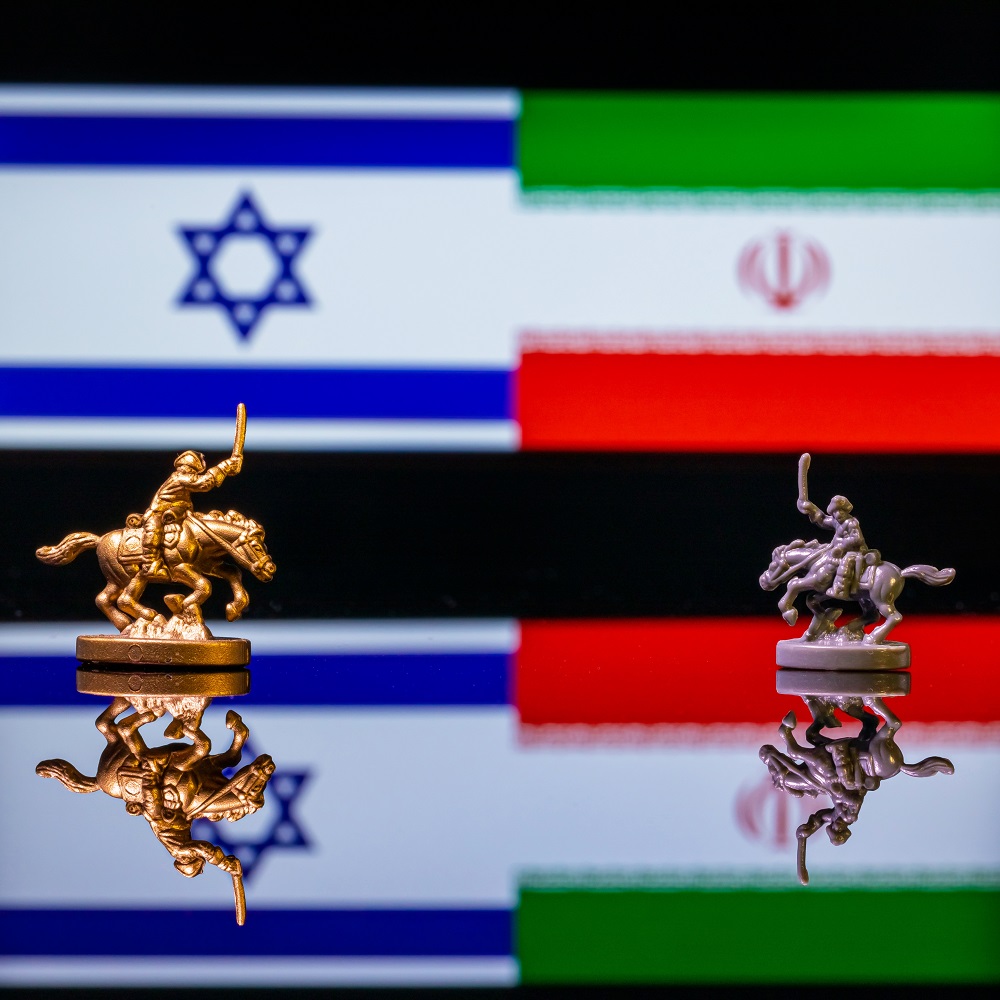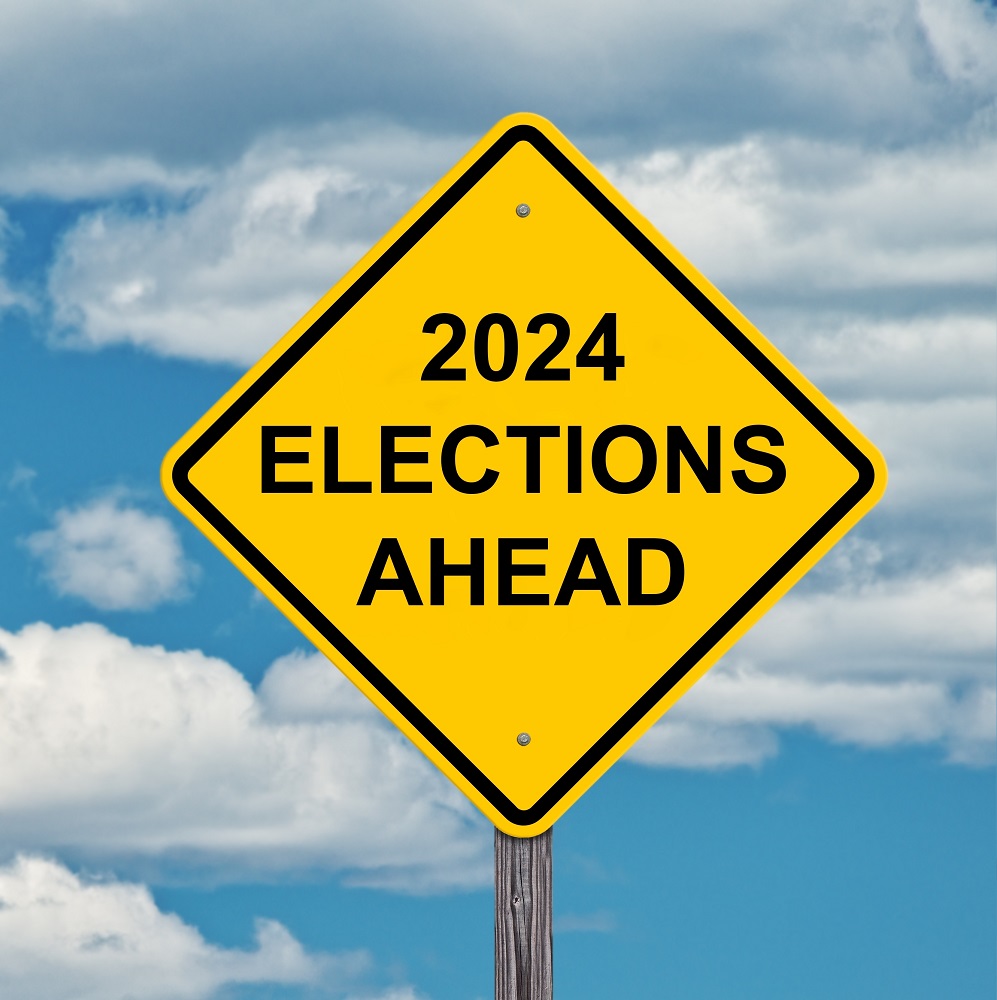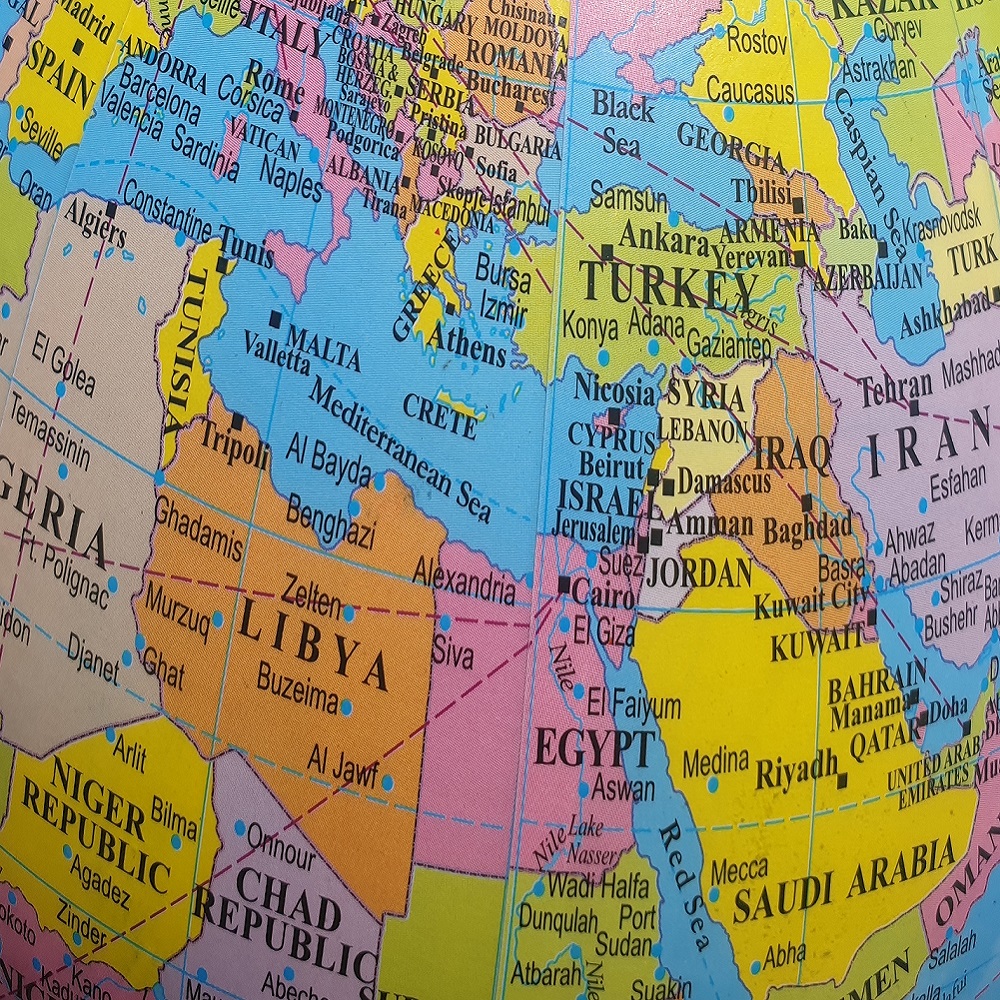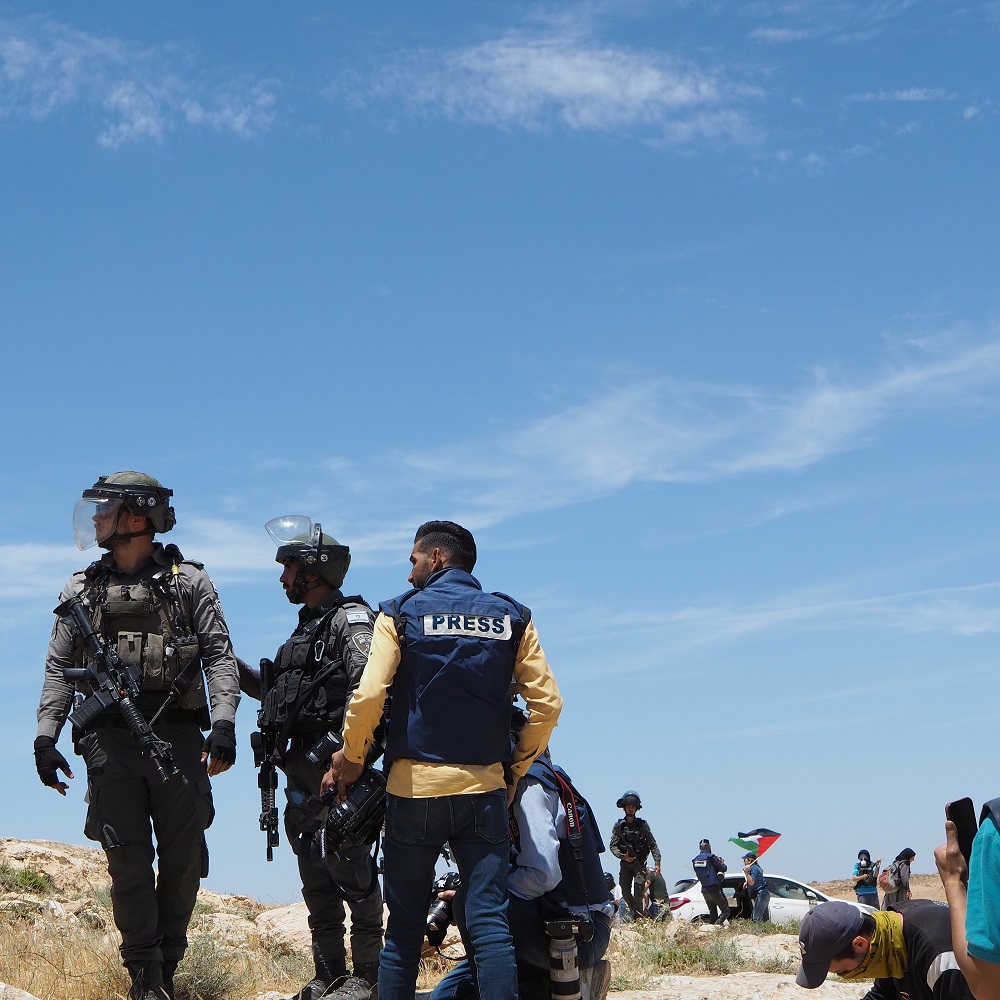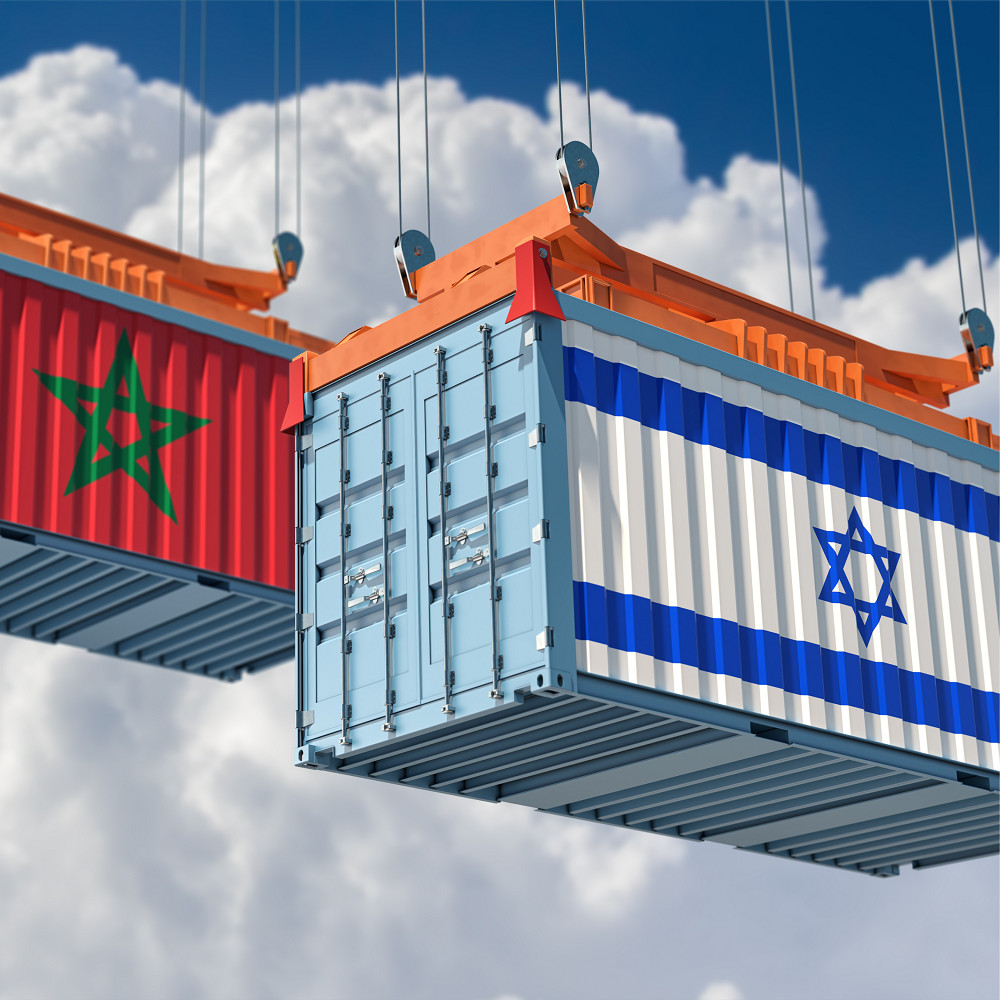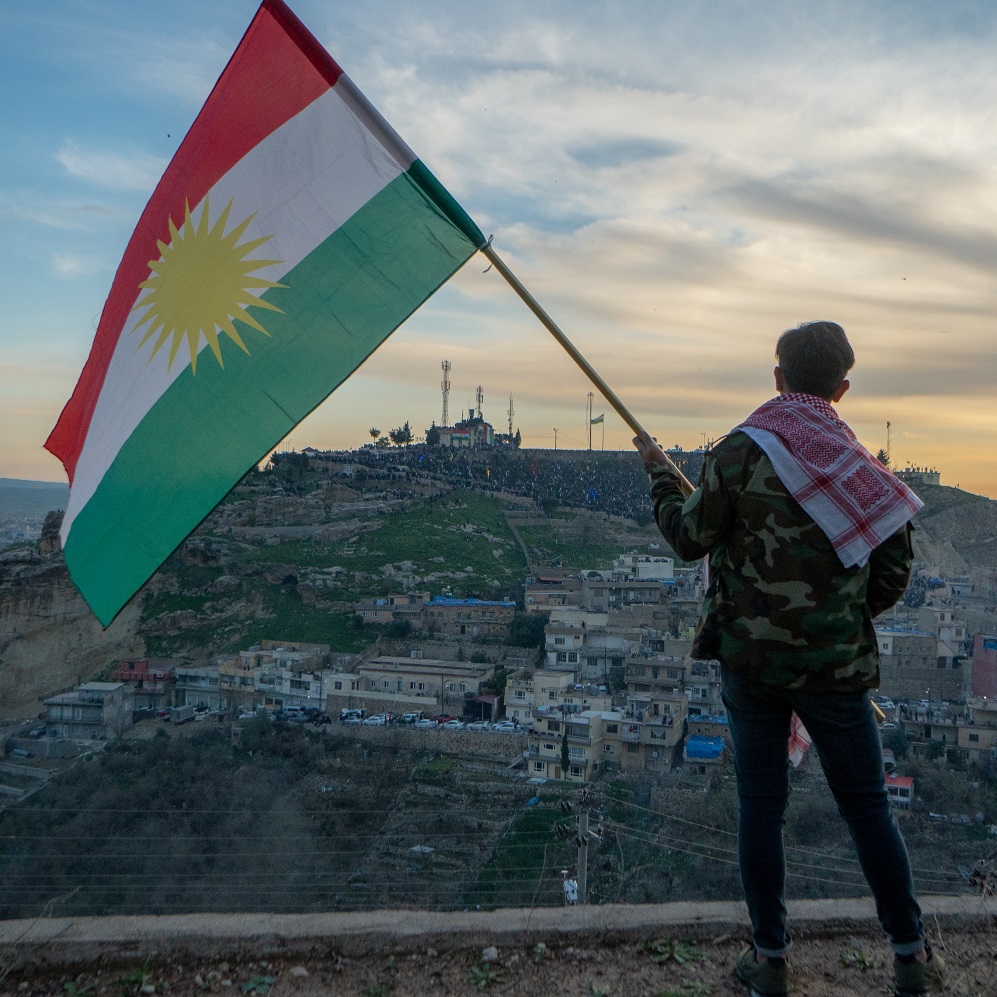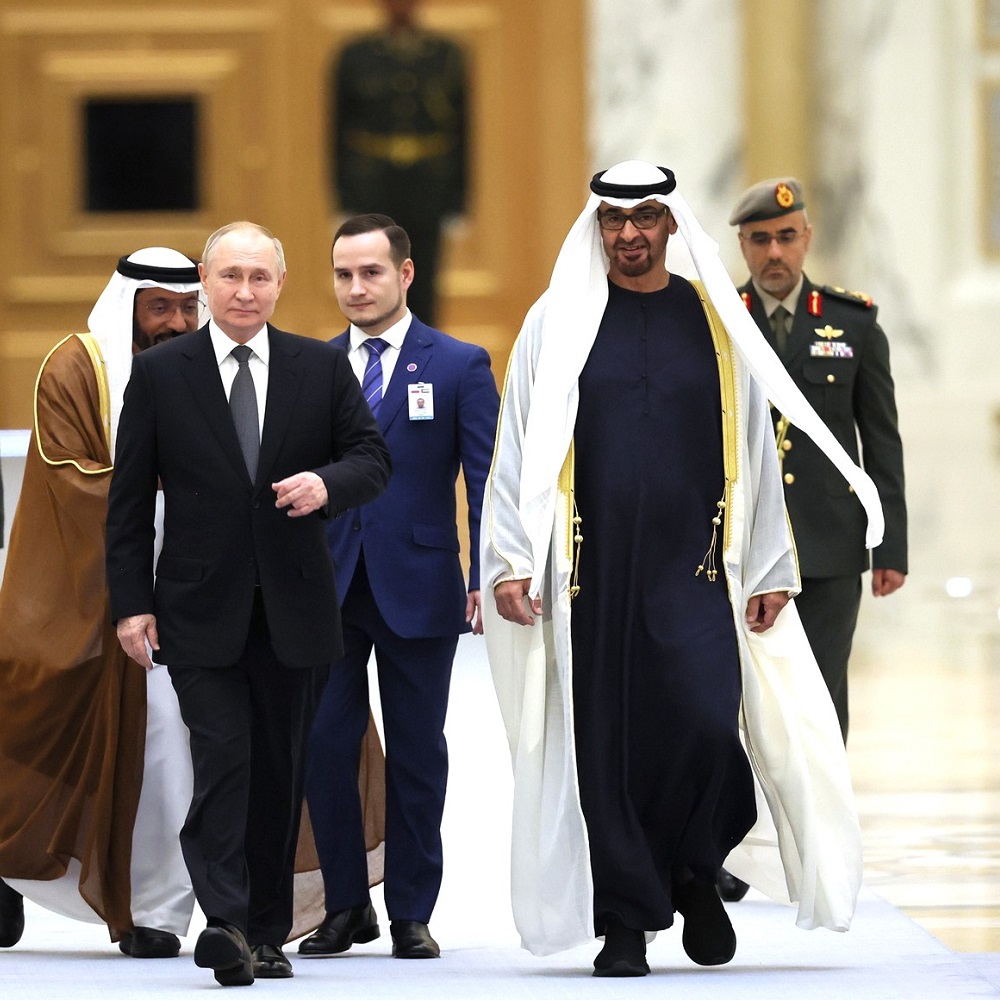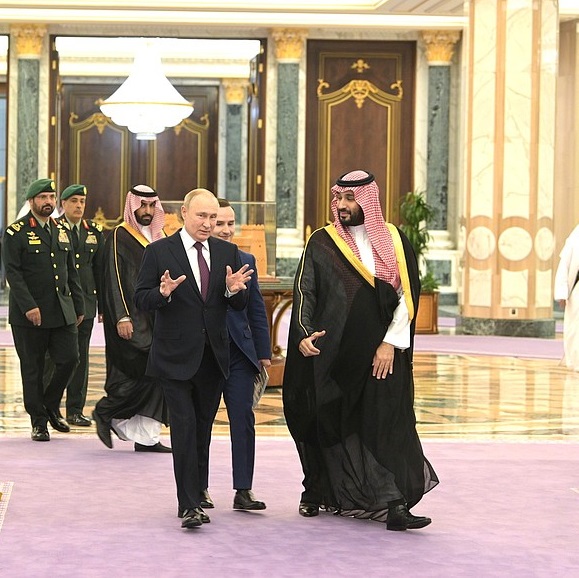The Evolvement of Iran–Israel’s Rivalry in the Red Sea and Eastern Africa
by Hamid Talebian , Dr. Sara Bazoobandi
Abstract
The rivalry between Iran and Israel has intensified over the past decades. Iran has continuously expanded its involvement across the region, which has led to a ‘balance of terror’ between the two countries. Various incidents of confrontation have occurred between the two countries in the Red Sea and East of Africa since 2010s. The Iranian regime, has been expanding its strategic depth into various regions, including Africa. Different Iranian administrations have adopted distinct policies in their term, that are influenced by various factors. The relations between Iran and East African countries have been transactional and facilitated by Iran’s effort to provide various forms of financial and military assistance in exchange for friendly diplomatic relations and ability to influence African leaders’ attitude towards the West and its allies, particularly Israel. This paper reviews the history of involvement of the two countries in these regions, and analyses how policies of confrontation in both countries have changed and developed over the different historical periods. The paper will have a particular focus on post-2005, because there is compelling evidence indicating a substantial expansion of Iran’s engagement in these regions.
1. Introduction
The rivalry between Iran and Israel has intensified over the past decades. This has been inflamed by various regional events such as Iran’s involvement in Syria, its nuclear ambitions, and Israel’s unprecedented peace agreement with some of the Gulf Cooperation Countries, Sudan, and Morocco. Tehran and Israel have been persistently adopting strategies, to counter the influence of one another in various regions. Such strategies have created a ‘balance of terror’1 between the two countries, in which Iran is deterred by Israel’s military capability and Tel Aviv is anxious of Iran’s ‘strategic depth’ and its expansion2. The latter has been demonstrated in various regional crises, including the attacks on Israel in October 2023.
Since 1979, the mainsprings of Iranian strategies have been to enhance the regime’s strategic depth while pursuing other objectives in support of what the senior political leaders in Iran refer to as ‘the geography of resistance’ 3. At the same time, Israeli policies have been framed around a fixation with maintaining security of the state of Israel. The country’s qualitative military edge is aimed at maintaining Israel’s security and military strength, against hostile neighbours, and other regional players including Iran and its proxies. This has led to many incidents of indirect confrontations that have occurred between the two countries in various regions, including in the Red Sea and East of Africa, since 2010s. This paper reviews the history of involvement of the two countries in these regions, and analyses how policies of confrontation in Tehran and Tel Aviv have changed and developed over the different historical periods. It will also explore how the Red Sea and East of Africa became a important zone for hostile strategies between the two countries.
Since 1979, and despite Israel’s military and security supremacy over Iran that stems from its advanced air force, sophisticated anti-missile air defence system, and its powerful intelligence system, the country has increasingly become concerned with Iran’s strategies. The state of Israel had maintained a stable and peaceful relationship with Iran before the 1979 Islamic Revolution. However, after the Revolution the regime in Tehran has taken an extremely hostile position towards Israel, calling it a ‘cancerous tumour, that will be uprooted and destroyed’4. Given the outright hostility between the two countries since 1979, the focus of the analysis in this paper will be to evaluate post-Revolutionary formulation of Iran’s policies in the Red Sea and Eastern Africa regions that are directed at Israel. A brief overview of Iran’s pre-1979 policies in Africa is also provided as a valuable contextual component to enrich the analysis.
The study reviewed various sources including academic literature and online news reports to collate data. Further, archival fieldwork was conducted at the National Archive of the United Kingdom (UK) to enrich the empirical evidence that is used in the analysis of the paper. During which the diplomatic catalogues of the archive, especially the Foreign Office (FO) and Foreign and Commonwealth Office (FCO) catalogues, were thoroughly examined to obtain relevant evidence. These catalogues contain a vast repository of data detailing interactions between the British government and foreign nations from 1782 to the present era.5 The documents that were reviewed at the National Archive have been extremely beneficial to clarify the relations between Iran and African countries.
2. Iran’s Engagement in Africa, a Historic Review
Iran’s engagement with the African continent is a history of ebbs and flows, revolving around both continuity and change. Commencing before the Islamic revolution (1979), it began under the reign of Mohammadreza Pahlavi, the Shah of Iran, and took the form of a pro-status quo set of foreign policies aiming at perforating the increasing Nasserist and communist-Soviet presence in the Sub-Saharan Africa.6 The Shah was particularly concerned about the growing influence of the Soviet Union and communist-backed regimes in the Horn of Africa and perceived the latter as a significant security threat to his rule. Additionally, a mixture of geopolitical and regional developments in the early 70s such as the cold war and great power competitions, the British withdrawal from the Persian Gulf, and decline of Arab nationalism after the death of Jamal Abdul Nasser, made the Shah more confident in pursuing an independent and more balanced foreign policy.
The Shah had ambitions to take the leading role as the security provider of the Indian Ocean in collaboration with its other littoral states. Against that backdrop, the Horn of Africa became strategically important for the Shah and, therefore, Iran pursued strategies that were aimed at growing the country’s influence in the region, particularly through closer ties with Ethiopia, Kenya, and South Africa.7 Additionally, Iran at the time sought to strengthen diplomatic alliance within the international forums such as the United Nations General Assembly, and its Security Council. This was mainly due to Iran’s contentious position with the Arab world over territorial disputes with Bahrain and with the United Arab Emirates over the three islands in the Persian Gulf.8
With the oil crisis largely looming in the early 70s and growing oil revenues, Iran was able to afford transactional relationships with African states, some of which were in dire need for financial aid, to gain diplomatic support. The historical rise of oil export income prompted the Shah’s ambitions to portray Iran as an altruistic nation willing to provide humanitarian and development assistance to poor African countries.
During this period Iran had a balanced position in relation to the state of Israel, except on the Israeli-Palestinian conflict. Iran’s view on the Palestinian issue was aligned with the Arab worlds and as British diplomatic records indicates, Tehran’s position on this issue was built on ‘Third-Worldism’ and anti-colonial rhetoric with the aim of distancing from, but simultaneously pressuring, the United States.9 Despite that, the Israeli government was relatively close to the government of the Shah and supported Iran’s activities in Africa, including in the Horn. The Shah personally believed that a united front in the Horn. constituting of Iran, Israel, and Ethiopia, would be a stabilising force and will bring security to the Horn of Africa.10
The 1979 Islamic Revolution changed Iran’s foreign policy direction on many levels. One of the driving forces of Iran’s foreign policy since the Revolution had been the state’s ideology. Iran’s post-Revolutionary political leaders have viewed the African Muslim communities as fertile ground for ‘exporting the Islamic revolution’ and expanding the geopolitics of Shiism.11 In Zimbabwe, for instance, the activities of the Iranian embassy has raised concerns as the security forces have been anxious about promotion of ‘Islamic fundamentalism’ and ‘indoctrination of young Zimbabweans’.12 Moreover, since the early years of the Revolution, the IRI have pursued diplomatic relations with African countries predominantly to counter economic and diplomatic influence of the West and its allies, including Israel. Through establishing transactional relationship with African states, in which the IRI provided African states with financial support, military assistance, and cooperation in development areas, Iran has been seeking to persuade African countries to limit ties with Israel.
Moreover, from the early years after the Revolution, the IRI has been seeking to expand its diplomatic ties with Africa to gain international recognition and legitimacy. One of the early diplomatic initiatives of the IRI in the continent was the diplomatic tour of Ayatollah Khamenei in 1986, in his capacity as the president at the time.13 Through that initiative, launched by Khamenei’s tour to Southern African countries, the IRI sought to expand its relations with the region mostly to break the country’s post-Revolution diplomatic isolation. Entangled in a long war with Iraq, that started right after the Revolution, the IRI was increasingly detached from the international community. Africa was at the time the most accessible region for Iran to connect with. In exchange, Iran offered development assistance, that was mostly channelled through Construction Jihad,14 and oil supplies.
In the aftermath of Iran-Iraq war and under the post-Cold War global dynamics, Iran’ former President, Hashemi Rafsanjani adopted a foreign policy approach aimed at normalising the IRI internationally.15,16 He actively followed up with diplomatic initiatives that were launched in the previous decade to invigorate Iran’s Africa policy by fomenting the transactional relationships. The expansion of relations between the IRI and Sudan is a great example of such initiatives. The IRI became one of the strongest allies of the ruling Islamic regime in Sudan. Iran invested in a variety of infrastructure projects in Sudan, including a 10 million US dollar road construction, connecting the North of the country to the South. The project was finished during Rafsanjani’s successor, former President Mohammad Khatami, term in office and was reportedly built by the Construction Jihad.17 Further, Iran provided military support for Omar-Al-Bashir’s government. Rafsanjani reportedly provided 300 million US dollar credit to Sudanese government to finance Al-Bashir’s purchase of Chinese weaponry.18
Some of the diplomatic initiatives that were launched in Africa during Rafsanjani’s presidency were continued during Khatami’s presidency. While maintaining relationships with some of the friendly states of Africa, such as Sudan, was carried over by Khatami’s administration, some of the cooperation deals and financial promises that were made during Rafsanjani’s presidency were abandoned. Africa played a minimal role in his foreign policy agenda and priorities that were revolving around the notion of ‘Dialogue of Civilisations’ and rapprochement with the West.19 When Khatami’s successor, former President Mahmoud Ahmadinejad came to office, his government reignited the abandoned initiatives in Africa. His government launched a comprehensive initiative to develop new ties and strengthen the old links with African states. Ahmadinejad’s Africa policy was a crucial element of his government’s populist politics, providing an exemplary opportunity for his administration to showcase their support for the underprivileged nations in Africa.
3. Principalists’ Role in Iran’s Africa Policy
Presidency of Ahmadinejad in 2005 was a turning point in the rise of the so-called ‘Principalists’ in the Iranian domestic politics. Principalists are considered to be the most conservative political camp in Iran. Due to their political ideology and loyalty for the Supreme Leader, they are known amongst the political factions in Iran, to be trusted allies of both Ayatollah Khamenei and the Islamic Republic Revolutionary Guards Corps (IRGC).
The victory of Mahmoud Ahmadinejad in Iran’s presidential election in 2005, was perceived as a turning point in Iran’s post-Revolutionary politics in favour of the Principalists, who promoted a foreign and domestic policy that were in line with the vision of the Supreme Leader. Though, Khamenei and Ahmadinejad clashed during his second term. Moreover, his presidency coincided with a historic rise of oil income in Iran that allowed pursuit of ambitious transactional relations with poorer nations, including those in East of Africa.
Ahmadinejad promoted a foreign policy discourse that was framed around advancing ‘South-South’ relations, with strong emphasis on anti-imperial rhetoric of ‘Third-Worldism’20. During his terms, Iran launched an active diplomatic outreach campaign to various countries in Global South. At the same time, the IRI cut International Atomic Energy Agency’s (IAEA) access, for monitoring and surveillance of on its nuclear sites, after some clandestine nuclear activities were revealed.21 Considering the significance of Iran’s nuclear program for the security of the State of Israel, the latter caused, and continues to do so, immense level of anxiety amongst the Israeli political and security elite. These developments induced a shift in geopolitical vision of the IRI in that period and prompted foreign policy decisions that sought to create a new arena of confrontation between the two countries, in the Red Sea and East of Africa.
As a result, Tehran pushed for strengthening relations with anti-West state and non-state actors to counter the international pressure that has been imposed on Iran in the form of international isolation and economic sanctions. The African continent, specifically the Eastern Africa, and the Red Sea region provided the IRI leaders an ideal environment to deter the international pressure and circumvent economic sanctions.
Another noticeable achievement of the IRI’s policy in this region has been demonstrated in Iran’s success in gaining political presence to increase the regime’s international status. A great indicator of such success is African nations’ voting pattern in favour of Iran in the United Nations (U.N.). Figure 1 demonstrates that many African countries, including those in the Eastern Africa and the ones with military ties to Iran, have remained either neutral or in favour of Iran in their votes on consecutive the U.N. human rights resolutions.
Figure 1. African states’ voting results in the U.N. General Assembly on resolutions related to the situation of human rights in Iran.
Source: Data compiled from the United Nations Library22 So far, the paper provided a brief historical review of the Iranian initiatives in Africa. It has also highlighted the significant focus on Africa during the presidency of Mahmoud Ahmadinejad, whose populist politics played a major role in strengthening the transactional ties with the African nations. Although, the development that have so far been discussed in the paper are not directly linked with the rivalries between Iran and Israel in Eastern Africa and the Red Sea, they provide a valuable background on the development of Iran’s Africa policy that dates to pre-Revolution era. The next section will focus on post-2005, because the empirical data that has been analysed for this paper indicates a substantial expansion of the IRI’s engagement in the Red Sea and East of Africa. It will be later discussed that such developments, were perceived alarming by the state of Israel and prompted various push back.
4. Significance of Eastern Africa and the Red Sea in Iran–Israel’s Geopolitical Confrontations
The presidency of Ahmadinejad (2005-2013) was characterised by an aggressive expansion of Iran’s ties with Africa. Such expansion has alarmed Iran’s regional rivals, particularly Israel. In this period, Iran opened five new embassies and reopened three of its embassies across the African continent. Three of these embassies were in countries on the Red Sea (Djibouti, Somalia, and Egypt).23 High global oil price in this period, boosted the IRI’s surplus revenue and enabled Ahmadinejad’s government to sign, or implement already signed, generous economic and developmental agreements with Eastern African states.24 Although, there is an important distinction between signing and implementation of such agreements, the evidence suggests a substantial rise in Iran’s economic assistance in the continent. Through a wide range of projects such as: a comprehensive cooperation agreement with Zimbabwe, agricultural investments and building the National Parliament in Comoros, and development of oil refineries in Eritrea,25. Iran sought to maximise its presence, and deepen its influence across the region. Similar transactional relationships with the states in the region have been pursued since that period by the Gulf Cooperation Council (GCC) countries.26
The Arab uprising and the rise of Muslim Brotherhood affiliates to senior political offices in Egypt was another significant event that took place in this period. Egypt under Mohammad Morsi began to build cordial relations with the IRI. After a long rule by pro-US Mubarak, who were hostile to the Islamic regime in Iran, improvement of relation with Egypt was a major step for Iran to the detriment of its regional adversaries, especially Israel. In post-Mubarak Egypt, the country’s security apparatus in the Sinai almost entirely collapsed and, consequently, it enabled the arms smugglers to transfer weapons – including Iranian cargoes freely to Gaza.27
During Ahmadinejad’d presidency, the IRI envisioned to utilise its ties with Africa to shift the balance of power against regional and global powers like Israel, Saudi Arabia, and the United States. As Table 1 indicates, more than half of Defense Cooperation Agreements (DCAs)28 that the IRI has concluded, between 2006 and 2012, with the African states, had been signed with Eastern African states.29 The DCAs, included a wide range of collaborations including knowledge transfer, training, and modernising the military infrastructure, and naval cooperation. As such, they were instrumental in accelerating Iran’s military presence in the region. Simultaneously, hefty modernising and restructuring packages were introduced to boost the IRI’s naval strength. These developments have raised concern in Tel Aviv. The rest of this section will investigate some of Iran’s expansion initiatives that prompted Israeli response.
As noted above, Sudan played a significant role in the IRI’s Africa strategy. Iran’s relations with Sudan have also become a key element of the evolving conflict between Iran and Israel. For many years, the IRI had been one of the primary suppliers of the country’s weaponry and military technology30 accounting for 13% of Sudan’s total arms import between 2001 to 2012.31 Given its proximity to Sinai region and Gaza, Sudan was selected by the IRGC-Quds operatives as a strategic route for transferring arms through the north of Sudan, into the Sinai and further delivered to Hamas and Palestinian Islamic Jihad (PIJ) militias. The weapon cargoes were reportedly transferred by the Egyptian and Sudanese smugglers through the Nubian desert in the east of Sudan, along the Red Sea coastlines, sea routes, and tunnels in between the Egyptian border and the Gaza strip.32 In response, between 2009 and 2011, several Israeli airstrikes that targeted weapon shipments in Sudan were launched on what was believed to be Iranian arms destined to Gaza.33 Further, in 2012, Israel bombed Yarmouk factory in Sudan, that was believed to be a hub of Iranian weapon production, and a critical supplier for shipments that were towards the Mediterranean.34
Iran has also reportedly used Eritrea, Somalia, and Djibouti to sustain its weapons shipment up to the Mediterranean as well as Yemen.35 The IRI has utilised regional turmoil and lack of security to expand its influence and maintain (or create new) weapon smuggling routes.36 In doing so, it has engaged with government and non-government actors across the region, which in some cases acted against each other. For example, despite the overall positive nature of the IRI with the Somalian government, Iran delivered weapon to the Council of Islamic Courts (CIC) fighters in Somalia, in support of their armed confrontation with the Somalian government, in exchange for small portions of uranium. It is worth noting that some of Iran’s strategies for engagement in this region have been carried out by Ahmadinejad’s successor as well. Under the Rouhani’s administration, the IRI cooperated with Horn of Africa states like Somalia against al-Shabab and other groups in the name of counterterrorism.
The IRI’s involvement in East Africa and the Red Sea, was built of a combination of transactional relations to boost access and supporting destabilising actors. Ongoing regional chaos, weak regional governments, and lack of security in the region have created a hospitable environment for external players to pursue their political gains. Tehran has been seeking to strengthen its regional presence while maintaining safe weapon delivery routes to allies and proxies in the Mediterranean. In other words, while the expansion into the Red Sea and East Africa has been strategically planned by the IRI to establish a network of influence across this region, the end goal has been to penetrate the Mediterranean region and maintain the support of network of allies and proxies, who are integral to Iran–Israel confrontation.
The data collected in this study supports this observation. Between 2006 and 2013, the bulk of Iran’s arm export had been destined to Syria, Lebanon (Hezbollah), and Sudan.37 At the same time, Israel played a pivotal role in South Sudan’s independence through providing military support for the South Sudanese Mayardit’s front in the war with Khartoum.38 It is worth noting that, except for the military assistance to South Sudan, Israel remained disengaged from the region throughout this period. The passive strategy of Israel in the region has been following the country’s overall defense doctrine, that is based on a consensus amongst the military and political elite over circumvention of overstretching the defense capacities. The diplomatic tour of the then Israeli foreign minister, Avigdor Lieberman, in 2009, in which he visited five African countries (nearly half of them were in Eastern Africa), marked one of Tel Aviv’s first political outreach to the continent.39 From the Israeli perspective, Lieberman’s African tour was largely motivated by gaining higher international recognition. Nevertheless, the Iranian pro-regime media interpreted it as a response to the first big diplomatic tour of Mahmoud Ahmadinejad to the African continent in 2008.40 In the post-2015 period, coincided with the war in Yemen and the events during in this period have been influenced by other regional powers’ effort for containing Iran in the region. Shortly after the beginning of the war in Yemen a diplomatic row between Saudi Arabia and Iran began that was prompted by the execution of a leading Saudi Shia cleric,43 and subsequent attack on Saudi embassy in Tehran. Apprehension about Iran’s destabilising strategies in the region, led to Saudi officials’ decision to embark on a regional initiative aimed at isolating Iran and containing its presence in this region. This was enhanced by the decline of the IRI’s interest under Rouhani’s Administration in maintaining the strategies pursued by the principalist president Ahmadinejad.44
Rouhani’s government prioritised a rapprochement with the West in pursuit of a nuclear deal that would bring the country out of its economic isolation and paid less attention to Africa. As a result, in 2016, all African countries in the Horn except Eritrea and Ethiopia but including Sudan (a long-time ally of the IRI), followed suit with Saudi Arabia and formally halted their diplomatic relationship with Iran. Government officials in Sudan explained their sudden and unexpected shift of policies against Iran to be ‘in response to to the barbaric attacks on the Saudi Arabian Embassy in Tehran and its consulate in Mashhad … ‘.45 However, this sudden turnaround was motivated by the ‘the promise of financial reward’46 coming from Riyadh and the latter’s subsequent promises for investing billions of dollars in Sudan’s economy combined with Sudan’s detente with the US for sanctions relief and revoking the ICC arrest warrant against Bashir. In the case of Egypt, the country was already limiting ties with Tehran after the 2013 military coup that toppled Mohammad Morsi. Losing Sudanese, Djiboutians, and Egyptian bases, the IRI lost several major corridors and littoral states’ territorial lands through which it was previously able to sustain military supplies to allies and proxies in the Mediterranean, and project power vis-à-vis Israel.
These setbacks on the part of Iran were coincided with Israel’s increasing diplomatic, military, and economic engagement in the region. Israeli Prime Minister, Benjamin Netanyahu, visited four East African states for the first time. The visits marked the highest Israeli ranked diplomatic visit to the region in decades. Shortly after, Israel’s Agency for Development Cooperation (MASHAV) reportedly approved to establish offices in all four countries. The agency allocated US$13 million to advance economic relations and cooperation in the region.47
Saudi Arabia’s effort to push Iran out of the region has also continued after 2016. The Saudi Crown Prince, Mohammad Bin-Salman, organised the Red Sea Organisation as a regional platform to create a united Arab and Muslim front against Iran and concurrently to ‘institutionalize its expanding patronage network’.48 A combination of Israeli and the Saudi efforts, that were driven by mutual security concerns over Iran’s strategies across the region, had limited Iranian influence in the region. Having said, the internal dynamics and domestic political decisions of the African states in the region have also played a significant role. These countries have been historically influenced by the external actors,49 whilst neither the Gulf monarchies nor Iran have not fully delivered on their promises of economic aid and development assistance. As such, cutting ties with Iran in exchange for closer alliance with Saudi Arabia or Israel would be perceived as an organic trade off, and indeed a rational decision in countries where Iran had been playing a destabilising role domestically (e.g. supporting CIC in Somalia).
Upon Iran’s multiple setbacks in the Horn of Africa, the country began pursuing its influence in Yemen as substitute strategic ally to counter the Saudi influence, and to compensate for its loss in the Red Sea region. In late 2014, the Houthis took control of the Yemeni port of Hodeida,50 a strategic location in the Red Sea. Shortly after, the Commander of Iranian Navy, Habibollah Sayyari, told the local state-owned media that the country’s presence in the Gulf of Adan and the North of Indian Ocean will be permanently maintained.51 Capturing the control of Hodeida was widely perceived in Iran as a victory and a major step towards increasing the country’s power in the region, despite the loss of ties with East African nations.52
The IRI also pursued other initiatives to challenge Israel in the region. One of Iran’s security policies towards Israel has been to pursue strategies that may result in pushing the opponent to overstretch its geographical and containment capabilities. Prompting Israel’s military campaign aimed at obstruction of arms smuggling routes across the Red Sea to block Iran’s efforts to arm allies and proxies in the Mediterranean region is a clear example of such strategies. These efforts have indeed influenced the security discourse in Israel and stimulated debate on whether the centre of activities of the Israeli naval forces should be moved from the Mediterranean to the Red Sea to deter Iran.53 In addition, various attempts have been plotted against Israel’s interest in the region. For example, in 2016 the Kenyan authorities reportedly arrested two individuals with suspected links with the Iranian government, that were collecting intelligence and preparing an attack against the Israeli embassy in Nairobi.54
Since 2019, the naval conflict between the two countries has exacerbated, particularly in the Red Sea.55 The IRGC’s presence in and beyond the Persian Gulf has caused concerns for all the regional players. Several Israeli ships have been attacked across the region, while the IRGC has been main suspect. In 2022, an Israeli tanker was attacked in the Gulf allegedly by Iranian drones and missiles.56 Since the beginning of the war in Syria, Israel has also reportedly conducted several attacks on the Iranian oil tankers that were destined to Syria,57 including a major Iranian-owned oil tanker, Sabiti, that was attacked near the cost of Jeddah. While neither Israel nor Saudi Arabia confirmed their involvement in the incident, it is speculated that it was a sabotage operation by the Israeli forces, to stop the Iranian tanker from reaching the Suez Canal.58 In 2021, one of the largest Iranian naval warships, Saviz, that was a crucial asset in IRI’s naval military operations in the Red Sea, was reportedly attacked by Israel.59 In the same year, another Iranian naval vessel, Khark, was attacked in the Strait of Hormoz. The naval tensions are a new form of confrontation between the two countries and are expected to escalate in external regions.
Iran’s engagement in the Red Sea region and its littoral states has increased since 2011. This may have been, in part, triggered by Iran’s nuclear activities. In February 2010, the International Atomic Agency reported for the first time that ‘Iran is actively pursuing nuclear weapon capability’60. Since then, Israel gradually recognised that the increasing Iranian influence in the region could pose a potential threat for its national security and economic interests. Although, Iran-Israel enmity dates to the very early days after the Islamic Revolution, Iran’s nuclear ambitions have played a significant role in escalation of the rivalry and its expansion to other regions such as the Red Sea and East of Africa.
In Moreover, 2011 is considered as a significant point in the history of Iran’s activities in this region because in this year, Iran for the first time, sent a warship to this region that sailed through the Red Sea and the Suez Canal to reach the Mediterranean. The presence of an Iranian warship was unsurprisingly alarming for the Israeli government. This has led to various events in the region, making this region a new zone for spill-over of the tension between the two countries. The move, unsurprisingly, caused strong reactions by the Israeli officials.61 Iran’s naval and political presence in this region has been perceived as a strong indicator for the country’s aspiration to expand its geopolitical influence.
Israel and Saudi Arabia, along with the United States, have expressed their concern over Iran’s increasing interest in this region62. Saudi Arabia has accused the IRI of supporting the Houthi rebels in Yemen63, while Israel has claimed that Iran is using the Red Sea maritime and land routes to support its allies and proxies across the Mediterranean, in Gaza, Lebanon, and Syria. 64 After Hamas attacks on Israel on 7 October, the risk of spill-over of Iran–Israel to this region has intensified. Most of Iran-backed proxies have openly expressed willingness for direct confrontation with Israel. In a televised statement, Houthi military spokesperson confirmed that the group had begun its missile and drone attacks on Israel and will continue to do so65. Such developments seem bound to make the prospects of Israel-Iran conflict (mostly through Iran’s proxies) in the region more likely. However, at the time of writing this article it is not possible to assess the extent or nature of this rapidly evolving conflict.
Against this backdrop, strategies of containment and deterrence that limit Iran’s influence in the region have formed the core of Israel’s involvement in the politics and security structure of this region. Consequently, such strategies fostered another component to indirect military confrontation between the two countries. Threatening security of the State of Israel in the Red Sea, given that around 20 percent of Israel’s total trade depends on this naval route,66 has also been a strong motivation in Tehran. The port of Eilat, which connects Israel to the Gulf of Aqaba and further to the Red Sea, is one of the country’s major trade chokepoints, and of defense significance. There have been special deterrence measures, put in place by Israel, to maintain free navigation and avoid hostile powers from blocking the naval routes.67
5. Conclusion: What Lies Ahead?
Iran–Israeli rivalry has evolved since the 1979 Revolution in Iran. The Iranian regime, has been pursuing ideology driven strategies of expanding its strategic depth into various regions, including Africa. Different Iranian administrations have adopted distinct policies in their term, that are influenced by various factors including ideological attachment with the most conservative senior political figures, government’s financial capabilities, and the overall international environment towards Iran. The relations between the IRI and some African countries have been transactional and facilitated by Iran’s effort to provide various forms of financial and military assistance in exchange for friendly diplomatic relations and ability to influence African leaders’ attitude towards the West and its allies, particularly Israel. This, combined with other factors such as Iran’s ambitious for the development of the country’s naval fleet, and its nuclear program have prompted anxious responses by Iran’s regional rivals, specifically in Tel Aviv. As a result, the Israeli government has begum to counter Iran’s effort to maintain its position in the continent. This has had spill-over effects particularly in the East of Africa and the Red Sea region. The region has become a crisis zone for strategic confrontations between Iran and Israel. This region is of high significance for Iran’s major adversary, for two reasons. First, it is of logistical significance for seaborn trade to Israel. Second, it is connected via the Suez Canal to the Mediterranean, strategically important to Israel security. Against that backdrop, the region has become increasingly important to both Tel Aviv and Tehran. Given Iran’s strategic ambitions to expand its realm of influence, it is expected that the region will remain relevant to the Iranian calculus. The IRI has expanded its military capacities, particularly in terms of missile and drone technologies. It is therefore, likely to continue strategies to seek influence in this region, lure the local governments with its advanced warfare and financial resources, and continue to remain a significant player for the security structure of the region. Considering about 12% of global trade passes through the Red Sea, Iran’s strategies in this region will undoubtedly have wider global impact.
Disclosure Statement: No potential conflict of interest was reported by the authors.
Correction Statement: This article has been corrected with minor changes. These changes do not impact the academic content of the article.
Additional information: Funding - This work was supported by the German Research Foundation (DFG, 463159331), and H2020 Marie Sklodowska‐Curie Actions, Grant/Award Number: 101025388.
Sara Bazoobandi & Hamid Talebian (2024) The Evolvement of Iran–Israel’s Rivalry in the Red Sea and Eastern Africa, Asian Journal of Middle Eastern and Islamic Studies, DOI: 10.1080/25765949.2023.2299076
© 2024 The Author(s). Published by Informa UK Limited, trading as Taylor & Francis Group
This is an Open Access article distributed under the terms of the Creative Commons Attribution License (http://creativecommons.org/licenses/by/4.0/), which permits unrestricted use, distribution, and reproduction in any medium, provided the original work is properly cited. The terms on which this article has been published allow the posting of the Accepted Manuscript in a repository by the author(s) or with their consent.
Notes
1 Marta Furlan, ‘Israeli-Iranian relations: past friendship, current hostility’, Israel Affairs 28(2), 2022, pp. 170–83, available at: https://doi.org/10.1080/13537121.2022.2041304
2 Michael Sagal, ‘Iran’s strategic depth expands from Yemen and Africa to the Mediterranean coast’, Jerusalem Center for Public Affairs, (8 July 2019), available at: https://jcpa.org/article/irans-strategic-depth-expands-from-yemen-and-africa-to-the-mediterranean-coast/
3 Edward Wastnidge and Simon Mabon, ‘The resistance axis and regional order in the middle east: nomos, space, and normative alternatives’, British Journal of Middle Eastern Studies, (2023), available at: https://doi.org/10.1080/13530194.2023.2179975
4 Amir Vahdat and Jon Gambrell, ‘Iran leader says Israel a ‘cancerous tumor’ to be destroyed’, Associated Press, (22 May 2020), available at: https://apnews.com/article/a033042303545d9ef783a95222d51b83
5 For more information, see, available at: https://www.nationalarchives.gov.uk/help-with-your-research/research-guides/foreign-commonwealth-correspondence-and-records-from-1782/
6 Jeffrey A. Lefebvre, ‘Iran’s scramble for Sub-Saharan Africa’, Insight Turkey 21(1), 2019, pp. 133–50.
7 The National Archives of the UK (TNA), ‘FCO 31/1126’, 1972.
8 H.E. Chehabi, ‘South Africa and Iran in the apartheid era’, Journal of Southern African Studies 42(4), 2016, pp. 687–709.
9 The National Archives of the UK (TNA), ‘FCO 8/2731’, 1976.
10 Robert Steele, ‘Two kings of kings: Iran-Ethiopia relations under Mohammad Reza Pahlavi and Haile Selassie’, The International History Review 43(6), 2021, pp. 1375–92.
11 Soli Shahvar, ‘Iran’s global reach: the Islamic Republic of Iran’s policy, involvement, and activity in Africa’, Digest of Middle East Studies 29(1), 2020, pp. 53–75.
12 The National Archives of the UK (TNA), ‘FCO 8/8969’, 1992.
13 UPI Archives, ‘President said Ali Khamenei of Iran, visiting Southern Africa’, (19 January 1986), available at: https://www.upi.com/Archives/1986/01/19/President-Said-Ali-Khamenei-of-Iran-visiting-southern-Africa/8506506494800/
14 Eric Lob, ‘The Islamic Republic of Iran’s foreign policy and construction Jihad’s developmental activities in Sub-Saharan Africa’, International Journal of Middle East Studies 48(2), 2016, pp. 313–38.
15 Shireen Hunter, ‘Iran’s pragmatic regional policy’, Journal of International Affairs 56(2), 2003, pp. 133–47.
16 R.K. Ramazani, ‘Ideology and pragmatism in Iran’s foreign policy’, Middle East Journal 58(4), 2004, pp. 549–59.
17 IRNA, ‘Journalists visit the ‘friendship road’ built by Iran in Sudan’, (31January 31, 2000), available at: https://www.irna.ir/news/6914870/بازدید-خبرنگاران-از-جاده-دوستی-که-توسط-ایران-در-سودان-احداث-شد
18 The National Archives of the UK (TNA), ‘FCO 8/8938’, 1992.
19 Edward Wastnidge, ‘Détente and dialogue: Iran and the OIC during the Khatami Era (1997–2005)’, Politics, Religion & Ideology 12(4), 2011, pp. 413–31.
20 Fariborz Arghavani Pirsalami, ‘Third Worldism and Ahmadinejad’s Foreign Policy’, Iranian Review of Foreign Affairs 4(2), 2013, pp. 81–109.
21 ‘Timeline of Iran’s Nuclear Programme’, The Guardian, (24 November 2013), available at: https://www.theguardian.com/world/2013/nov/24/iran-nuclear-timeline
22 United Nations, ‘United Nations Digital Library, Voting Data 2005-2022’, available at: https://digitallibrary.un.org/search?cc=Voting+Data&ln=en&c=Voting+Data
23 Mira Demirdirek, Jens Heibach, and Hamid Talebian, ‘Explaining middle-power engagement in external regions: a comparison of Iranian, Saudi, and Turkish Sub-Saharan Africa policies dataset’, MPEX German Institute for Global and Area Studies.
24 For an overview, see: Eric Lob, ‘THE ISLAMIC REPUBLIC OF IRAN’S FOREIGN POLICY AND CONSTRUCTION JIHAD’S DEVELOPMENTAL ACTIVITIES IN SUB-SAHARAN AFRICA’, International Journal of Middle East Studies 48(2), (2016), p.313-338.
25 Haifa Ahmed Al MAASHI, ‘From security governance to geopolitical rivalry: Iran-GCC confrontation in the Red Sea and the Indian Ocean’, Asian Journal of Middle Eastern and Islamic Studies 11(4), 2017, pp. 46–63.
26 See, Alex De Waal, ‘Pax Africana or middle east security alliance in the Horn of Africa and the Red Sea?’, World Peace Foundation, no. Occasional Paper 17, 2019, available at: https://eprints.lse.ac.uk/100166/
27 Eran Zohar, ‘The arming of non-state actors in the Gaza strip and Sinai Peninsula’, Australian Journal of International Affairs 69(4), 2015, pp. 438–61.
28 ‘DCAs establish broad legal umbrellas for the range of cooperative defense activities in which states might engage, from coordinating defense policies to conducting joint exercises to jointly producing weapons and technology’. See Brandon J. Kinne, ‘The Defense Cooperation Agreement Dataset (DCAD)’, Journal of Conflict Resolution 64(4), 2020, p. 730.
29 Mira Demirdirek, Jens Heibach, and Hamid Talebian, ‘Explaining middle-power engagement in external regions: a comparison of Iranian, Saudi, and Turkish Sub-Saharan Africa policies dataset’, MPEX German Institute for Global and Area Studies .
30 Reuters, ‘Sudan has drones, is pursuing missiles − state media’, Reuters, (5 September 2007), available at: https://www.reuters.com/article/idINIndia-29357320070905
31 Mira Demirdirek, Jens Heibach, and Hamid Talebian, ‘Explaining middle-power engagement in external regions: a comparison of Iranian, Saudi, and Turkish Sub-Saharan Africa policies dataset’, MPEX German Institute for Global and Area Studies; Jonah Leff and Emile LeBrun, Following the Thread: Arms and Ammunition Tracing in Sudan and South Sudan, May 2014. Small Arms Survey.
32 Eran Zohar, ‘The arming of non-state actors in the Gaza strip and Sinai Peninsula’, Australian Journal of International Affairs 69(4), 2015, pp. 438–61.
33 ‘Sudan: questions on an Airstrike’, Stratfor, (26 March 2009), available at: https://worldview.stratfor.com/article/article/sudan-questions-airstrike; ‘Dispatch: Missile Strike in Port Sudan’, Stratfor, (6 April 2011), available at: https://worldview.stratfor.com/article/article/dispatch-missile-strike-port-sudan
34 ‘Satellite pictures suggest Sudanese weapons factory hit by air strike’, The Guardian, (27 October 2012), available at: https://www.theguardian.com/world/2012/oct/27/sudan-weapons-factory-airstrike-israel
35 ‘Eastern Africa: a battleground for Israel and Iran’, Stratfor, (29 October 2012), available at: https://worldview.stratfor.com/article/eastern-africa-battleground-israel-and-iran
36 ‘Report of the Monitoring Group on Somalia Pursuant to Security Council Resolution 1676’, UN Security Council, (21 November 2006), available at: https://www.refworld.org/docid/46cbf2e00.html
37 ‘SIPRI arms transfers database (SIPRI)’, Stockholm International Peace Research Institute, (13 March 2023), available at: https://www.sipri.org/databases/armstransfers
38 ‘Israeli penetration into East Africa objectives and risks’, (29 September 2016), available at: http://studies.aljazeera.net/en/reports/2016/09/israeli-penetration-east-africa-objectives-risks-160929102604246.html
39 Tania Krämer, ‘A history of Africa-Israel relations’, DW, (18 April + 2018), available at: https://www.dw.com/en/a-history-of-africa-israel-relations/a-43395892
40 Ali Maroufi Arani, ‘How Iran was able to eliminate Israeli cultural centers across the black continent’, Mehr News Agency, (28 January 2023), available at: https://www.mehrnews.com/news/5693917/ایران-چگونه-توانست-مراکز-فرهنگی-اسرائیل-در-قاره-سیاه-را-حذف-کند
41 Kinne, ‘The Defense Cooperation Agreement Dataset (DCAD)’.
42 Mira Demirdirek, Jens Heibach, and Hamid Talebian, ‘Explaining middle-power engagement in external regions: a comparison of Iranian, Saudi, and Turkish Sub-Saharan Africa policies dataset’, MPEX German Institute for Global and Area Studies.
43 Martin Chulov, ‘Saudi Arabia cuts diplomatic ties with Iran after execution of cleric’, The Guardian, (4 January 2016), available at: https://www.theguardian.com/world/2016/jan/03/saudi-arabia-cuts-diplomatic-ties-with-iran-after-nimr-execution
44 See: Reza Bagheri and Eric Lob, ‘Rouhani’s Africa policy: disengagement, 2013–21’, Middle East Policy 29(1), 2022, pp. 154–73, available at: https://doi.org/10.1111/mepo.12618
45 ‘Sudan cuts diplomatic ties with Iran’, Reuters, (4 January + 2016), available at: https://www.reuters.com/article/us-saudi-iran-sudan-idUSKBN0UI17720160104
46 ‘Why has Sudan ditched Iran in favour of Saudi Arabia?’, The Guardian, (12 January 2016), available at: https://www.theguardian.com/world/2016/jan/12/sudan-siding-with-saudi-arabia-long-term-ally-iran
47 ‘Israeli penetration into East Africa objectives and risks’, (29 September, 2016), available at: http://studies.aljazeera.net/en/reports/2016/09/israeli-penetration-east-africa-objectives-risks-160929102604246.html
48 Zach Vertin, ‘Toward a Red Sea Forum: the gulf, the Horn of Africa, & architecture for a new regional order’, Brookings Doha Center Analysis Paper, 2019, 18.
49 Jeffrey A. Lefebvre, ‘Middle East conflicts and middle level power intervention in the Horn of Africa’, Middle East Journal 50(3), 1996, pp. 387–404.
50 ‘Houthi Rebels take over Yemen’s Hodeidah Port: residents’, Reuters, (15 October 2014), available at: https://www.reuters.com/article/us-yemen-insurgency-idUSKCN0I40HB20141015
51 ‘Iran’s Presence in the North of Indian Ocean and the Gulf of Aden will be maintained’, FarsNews, (20 January 2015), available at: https://www.farsnews.ir/news/13931030000483/حضور-ایران-در-شمال-اقیانوس-هند-و-خلیج-عدن-مستمر-و-همیشگی-است
52 Mira Demirdirek, Jens Heibach, and Hamid Talebian, ‘Explaining middle-power engagement in external regions: a comparison of Iranian, Saudi, and Turkish Sub-Saharan Africa policies dataset’, MPEX German Institute for Global and Area Studies; Ali Maroufi Arani, ‘How Iran was able to eliminate Israeli cultural centers across the black continent’, Mehr News Agency, (28 January 2023), available at: https://www.mehrnews.com/news/5693917/ایران-چگونه-توانست-مراکز-فرهنگی-اسرائیل-در-قاره-سیاه-را-حذف-کند
53 Lazar Berman, ‘After Saviz strike, Israel may be in dire straits trying to battle Iran at sea’, Times of Israel, (11 April 2021), available at: https://www.timesofisrael.com/after-saviz-strike-israel-may-be-in-dire-straits-trying-to-battle-iran-at-sea/
54 Banafsheh Keynoush, ‘Iran’s Africa-Pivot Policy’, Middle East Policy 28(3–4), 2021, p. 236, available at: https://doi.org/10.1111/mepo.12605
55 For an overview, see A. Lott, Iran-Israel ‘shadow war’ in waters around the Arabian Peninsula and incidents near the Bab El-Mandeb, in hybrid threats and the law of the sea use of force and discriminatory navigational restrictions in straits, Edited by A. Lott (Brill Nijhoff, Leiden, 2022), p.117-141.
56 Eric Lob and Edward Riehle, ‘Assessing the threat of Iran’s drone carriers’, Middle East Institute, (7 March + 2023), available at: https://www.mei.edu/publications/assessing-threat-irans-drone-carriers
57 Gordon Lubold, Benoit Faucon, and Felicia Schwartz, ‘Israeli strikes target Iranian oil bound for Syria’, The Wall Street Journal, (11 March 2021), available at: https://www.wsj.com/articles/israel-strikes-target-iranian-oil-bound-for-syria-11615492789
58 ‘Leakage from Targeted Iran tanker halted as it heads for Gulf -Iranian media’, Reuters, (12 October 2019), available at: https://www.reuters.com/article/mideast-iran-tanker-idINL5N26X06D
59 Farnaz Fassihi, Eric Schmitt, and Ronen Bergman, ‘Israel-Iran Sea skirmishes escalate as mine damages Iranian military ship’, The New York Times, (6 April 2021), available at: https://www.nytimes.com/2021/04/06/world/middleeast/israel-iran-ship-mine-attack.html
60 ‘Timeline: Iran’s nuclear program’, Reuters, (19 May 2010), available at: https://www.reuters.com/article/us-iran-sanctions-nuclear-events-idUSTRE64I2O620100519
61 ‘Israel Anger at Iran Suez canal warship move’, BBC News, (16 February 2011), available at: https://www.bbc.com/news/world-middle-east-12488908
62 Jeffrey A. Lefebvre, ‘Iran in the horn of Africa: outflanking U.S. allies’, Middle East Policy 19(2), 2012, p. 126.
63 Chase Winter, ‘Saudi coalition blames Iran for missile attack’, dw.com, (11 May 2017), available at: https://www.dw.com/en/saudi-led-coalition-blames-iran-for-houthi-missile-attack/a-41248951
; Carole Landry, ‘Iran arming Yemen’s Houthi rebels since 2009: UN report’, Middle East Eye, (1 May 2015), available at: http://www.middleeasteye.net/news/iran-arming-yemens-houthi-rebels-2009-un-report
64 Isabel Kershner, ‘Israel says it seized ship in red sea with load of Iranian rockets headed to Gaza’, The New York Times, (5 March 2014), available at: https://www.nytimes.com/2014/03/06/world/middleeast/israel-fires-on-militants-along-syrian-border.html
65 Maha El Dahan, ‘Yemen’s Houthis enter Mideast fray, hardening spillover fears’, Reuters, (1 November 2023), available at: https://www.reuters.com/article/israel-palestinians-houthis-idUSKBN31V1GR
66 Mira Demirdirek, Jens Heibach, and Hamid Talebian, ‘Explaining Middle-Power Engagement in External Regions: A Comparison of Iranian, Saudi, and Turkish Sub-Saharan Africa Policies Dataset’, MPEX German Institute for Global and Area Studies.
67 See N. Lucas, Israeli Policy in the Red Sea, in The Red Sea: Prospects for Stability, edited by A.M. Farid (New York: Routledge, 1983).
